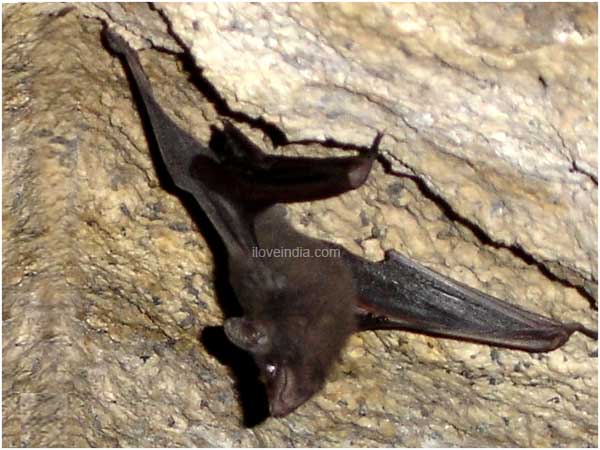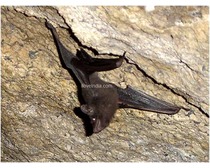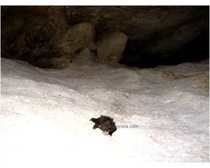Seychelles sheath-tailed bat is one of the world’s rarest mammals, native to Seychelles. Read on to find more interesting facts and amazing information on Seychelles sheath-tailed bats.
Facts About Seychelles Sheath-tailed Bat
A sac-winged bat, Seychelles sheath-tailed bat has derived its name from the Seychelles Islands, located to the north of Madagascar. The mammal flourished in 1800s, but randomly declined during the mid and late 1900s, owing to the effects of introduced plant species that lead to habitat deterioration. Today, it has been enlisted in the endangered species, with an estimation of around 30-100 individuals alive. Since the mammal is endemic to Seychelles, it cannot be found anywhere else in the world. The bat flies around bamboo at twilight and in the daytime, it spends time resting in the cracks of the mountainside, facing the sea. Seychelles sheath-tailed bat has pale under parts, with reddish brown or dark brown body parts. Read on to know some more interesting facts and amazing information on this nocturnal mammal.

Facts About Seychelles Sheath-tailed Bat
Binomial Name: Coleura seychellensis
Kingdom: Animalia
Phylum: Chordata
Subphylum: Vertebrata
Class: Mammalia
Order: Chiroptera
Family: Emballonuridae
Subfamily: Taphozoinae and Emballonurinae
Genus: Coleura
Species: C. seychellensis
Height: 2.2–2.6 in (5.5–6.5 cm)
Weight: 10 - 11 g (0.4 oz)
Life Span: not known
Diet: insectivorous
Range: central granitic islands of the Seychelles Islands (north of Madagascar)
Habitat: rainforest trees,coastal rocky field caves with stable cool temperatures and access to palm woodland or marsh habitat
Age of Sexual Maturity: 9 months (females)/ 21 months (males)
Gestation Period: Approximately 2 months
Number of Offspring: one
Interesting & Amazing Information On Seychelles Sheath-tailed Bats
- The word sheath-tailed, in the name of the mammal, focuses on the membrane that stretches between the hind legs and can be lengthened or shortened, as it slips over the tail, thereby increasing the bat’s ability to change positions during the flight.
- The number of Seychelles sheath-tailed bat started declining around the mid of the 20th century. It has been suggested that the barn owl, Tyto Alba, may be responsible for its rapid decline.
- The feeding activity of the bat takes place on its preferred, coastal environments, with abundant insects, especially moths and beetles.
- As in case of other bats, Seychelles sheath-tailed bat also hangs from the ceiling by all four limbs, with its stomach pressed against the surface, when disturbed. When relaxed, it hangs with its feet.
- The largest surviving roost (settlement) of the bat is on Silhouette Island, along with small roosts in Mahé, Praslin and La Digue islands.
- The West coast of Mahe has three roosts of Seychelles sheath-tailed bats. The roosts are usually located in the rocky caves that sometimes, occur in remote or difficult to access locations. However, still, these bats become susceptible to encroachments and developments.
- Seychelles sheath-tailed bats echo at frequencies of 32-40 kHz, when they commute and feed outside the cave. However, the same functions, when taken place within the cave, are at much lower frequencies, of 15-20 kHz.
- The hiding places of these bats are generally covered with large endemic palm leaves.
- Seychelles sheath-tailed bats mate in late August and early September and give birth to the young ones in the late November or early December.
- The young bats have only 24% of the female body weight and are well furred, with their eyes open.
- The young ones of Seychelles sheath-tailed bats gain independence when they are 3- 4 weeks old and have reached 50% of their mother’s body weight.
- The colonies of these bats are divided into harem groups, each of which is led by a single male and includes adult females and their young ones.


See also
More from iloveindia.com
- Home Remedies | Ayurveda | Vastu | Yoga | Feng Shui | Tattoos | Fitness | Garden | Nutrition | Parenting | Bikes | Cars | Baby Care | Indian Weddings | Festivals | Party ideas | Horoscope 2015 | Pets | Finance | Figures of Speech | Hotels in India : Delhi | Hyderabad | Chennai | Mumbai | Kolkata | Bangalore | Ahmedabad | Jaipur
- Contact Us Careers Disclaimer Privacy Policy Advertise With Us Lifestyle Sitemap Copyright iloveindia.com. All Rights Reserved.





